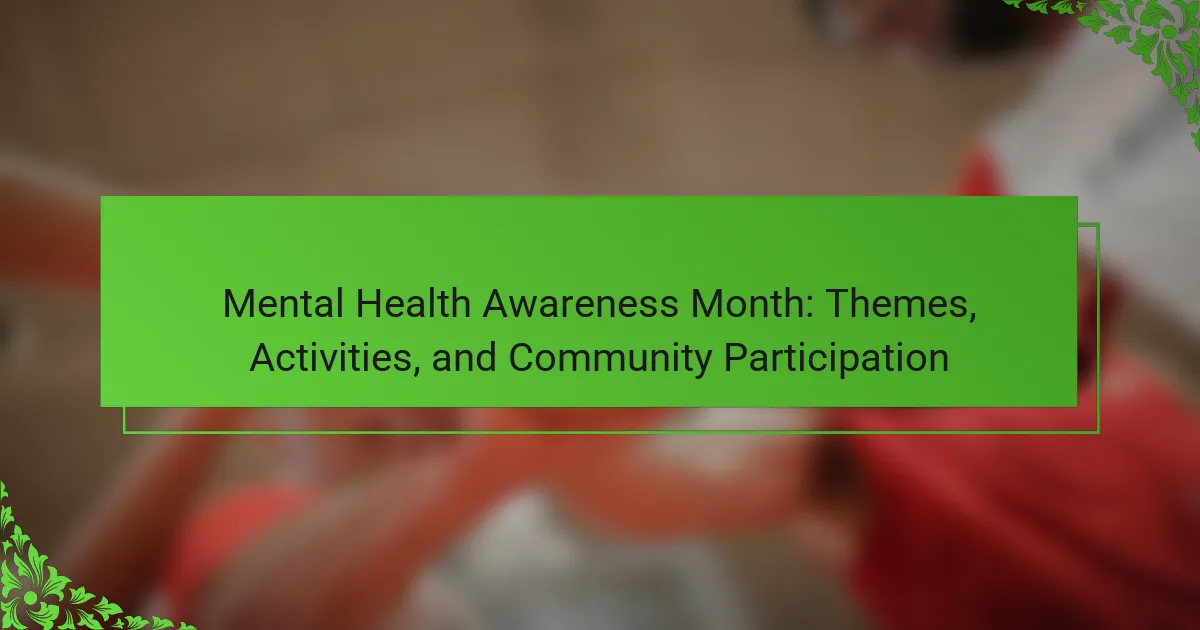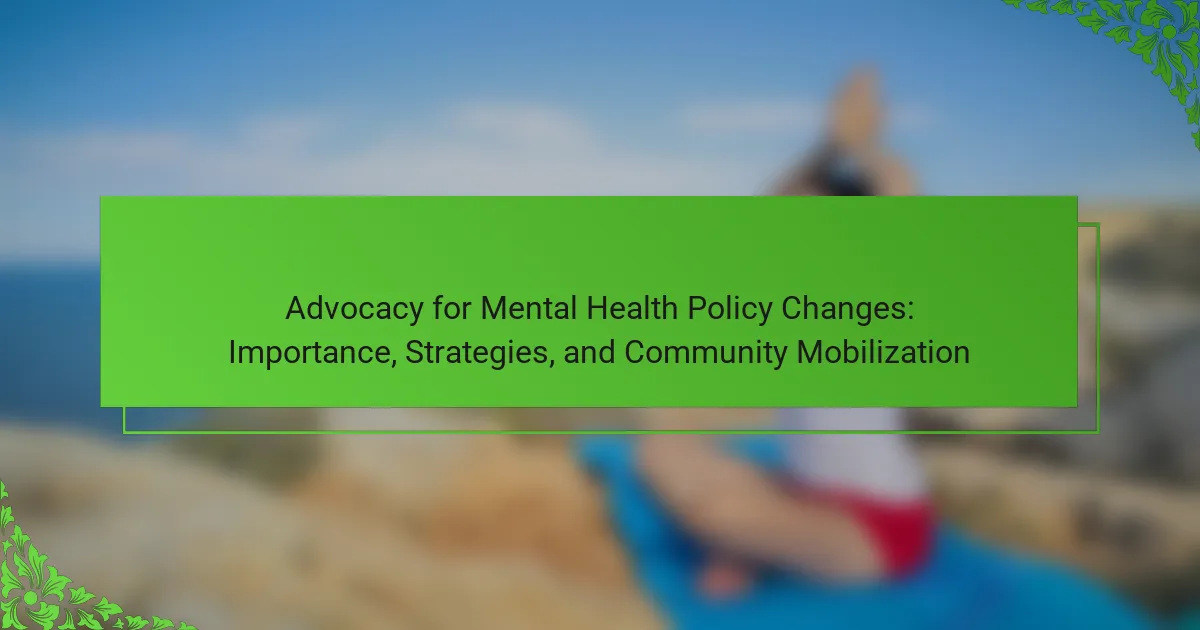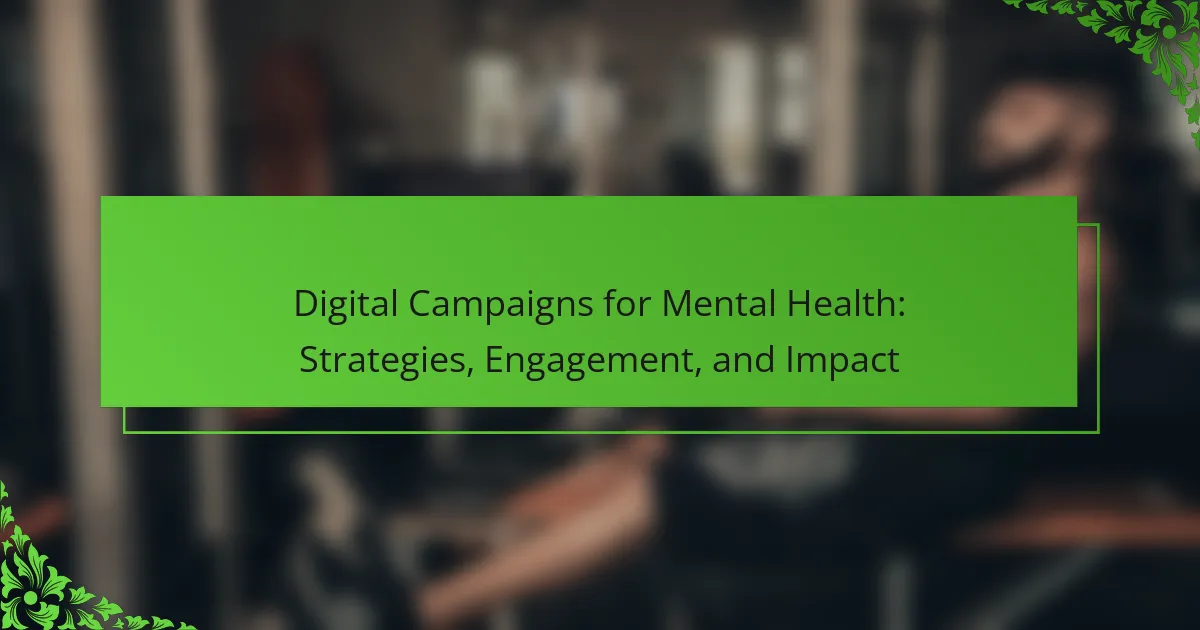Mental Health Awareness Month plays a crucial role in reducing stigma and promoting community support. This article explores key themes, various activities such as workshops and screenings, and the importance of community participation in fostering mental well-being. Additionally, it highlights the role of organizations and social media in enhancing awareness and engagement. Addressing challenges and unique initiatives, the content aims to empower individuals and communities in their mental health journeys.
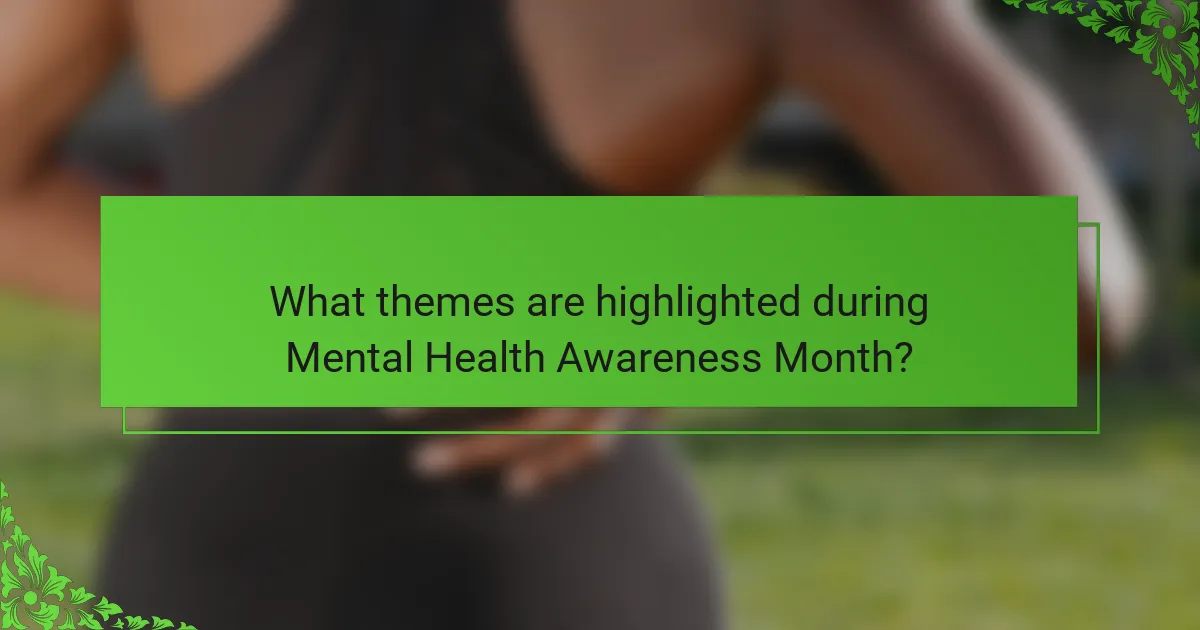
What themes are highlighted during Mental Health Awareness Month?
Mental Health Awareness Month highlights themes such as stigma reduction, community support, and self-care. Activities often include workshops, mental health screenings, and educational campaigns. Community participation fosters dialogue and promotes resources for mental well-being.
How do these themes vary by region?
Themes for Mental Health Awareness Month vary significantly by region due to cultural, social, and economic factors. For instance, in North America, there is a strong focus on reducing stigma and promoting accessibility to mental health services. In contrast, European countries often emphasize community engagement and integration of mental health into primary care systems.
In Asia, themes may revolve around traditional practices and holistic approaches to mental wellness, reflecting unique cultural beliefs. African regions frequently highlight the importance of community support and addressing mental health disparities.
Overall, local issues, resources, and cultural attitudes shape how mental health themes are presented and prioritized in different regions.
Why is each theme important for mental health advocacy?
Each theme is crucial for mental health advocacy as it raises awareness, fosters community engagement, and promotes understanding. Themes provide a focused lens to address specific mental health issues, encouraging dialogue and reducing stigma. Engaging in activities related to these themes empowers individuals and communities, fostering support networks. Furthermore, community participation amplifies voices, ensuring diverse perspectives are included in mental health conversations.
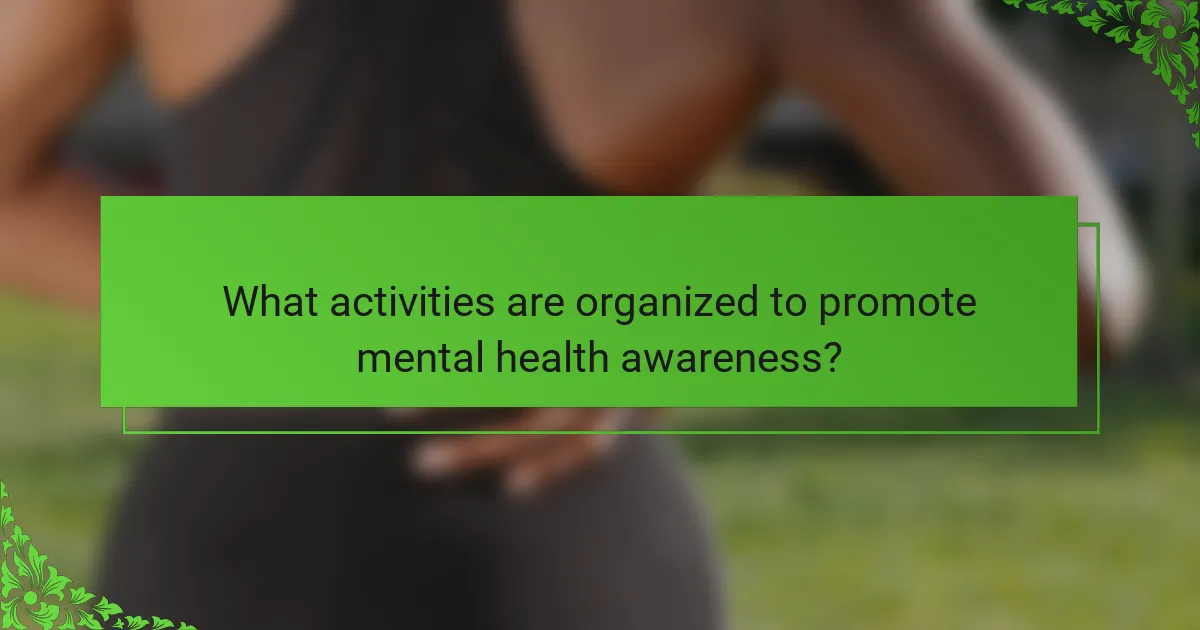
What activities are organized to promote mental health awareness?
Various activities promote mental health awareness, including workshops, community walks, and educational seminars. These initiatives aim to foster understanding and reduce stigma surrounding mental health issues. For example, local organizations often host panel discussions featuring mental health professionals to share insights and resources. Additionally, art exhibits and creative expression events encourage participants to explore mental health themes through various mediums. Social media campaigns also play a crucial role in spreading awareness and engaging a broader audience.
Which activities engage the community most effectively?
Community events that promote mental health awareness engage participants effectively. Activities such as workshops, support groups, and awareness campaigns foster connection and understanding. Collaborative art projects, mindfulness sessions, and community walks also encourage participation and reduce stigma. These initiatives build a supportive environment, enhancing community mental health.
How can individuals participate in these activities?
Individuals can participate in Mental Health Awareness Month by engaging in community events, educational workshops, and social media campaigns. They can volunteer for local mental health organizations, attend seminars, or share personal stories to raise awareness. Participation also includes advocating for mental health policies and supporting friends and family. These activities foster a supportive environment and promote understanding of mental health issues.
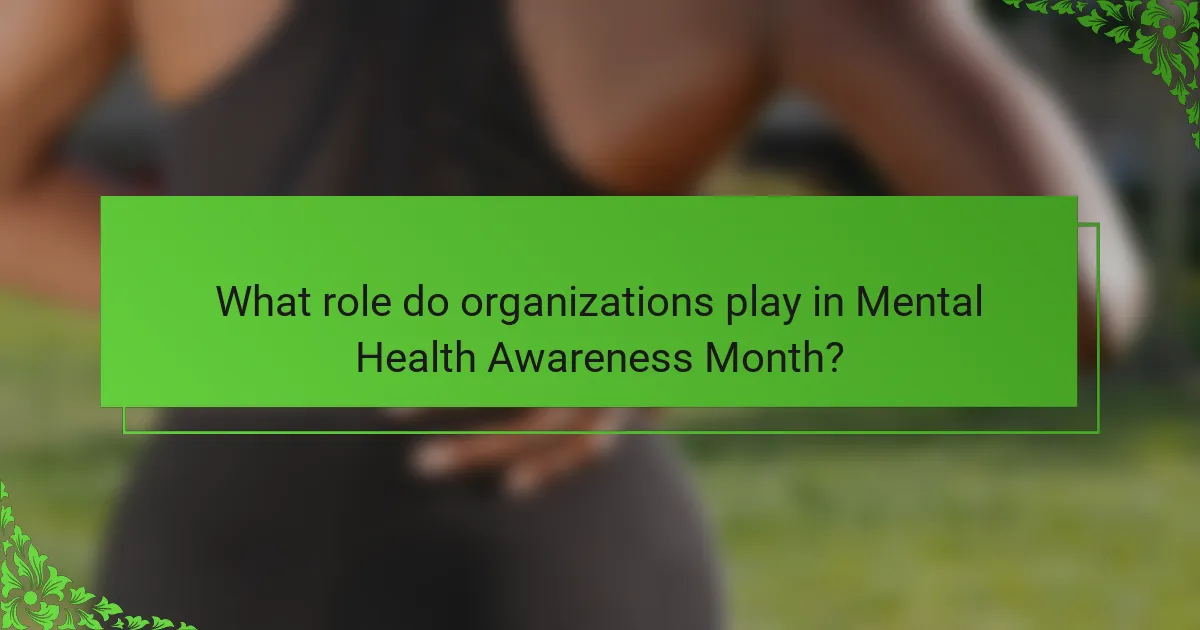
What role do organizations play in Mental Health Awareness Month?
Organizations play a vital role in Mental Health Awareness Month by promoting education, reducing stigma, and encouraging community engagement. They facilitate workshops, provide resources, and organize events to raise awareness about mental health issues. For example, many organizations collaborate with local communities to host mental health screenings and informational sessions. These efforts aim to foster a supportive environment and empower individuals to seek help. By leveraging their networks, organizations can reach diverse populations and highlight the importance of mental well-being.
Which organizations are most influential in different regions?
Mental health organizations vary in influence across regions. In North America, the National Alliance on Mental Illness (NAMI) leads efforts. Europe sees the World Federation for Mental Health as a key player. In Asia, the Asian Federation of Psychiatric Associations plays a significant role. Africa’s influence comes from the African Mental Health Foundation. In Australia, Beyond Blue is prominent. Each organization tailors its initiatives to local cultural contexts and needs.
How do these organizations collaborate with communities?
Organizations collaborate with communities by promoting mental health awareness through events, workshops, and outreach programs. These initiatives foster engagement and provide resources tailored to community needs. For example, local mental health organizations often partner with schools to host educational seminars that address stigma and encourage open discussions about mental health. Additionally, organizations may facilitate support groups that create safe spaces for individuals to share experiences and seek help. Community participation enhances the effectiveness of these programs, ensuring they resonate with diverse populations.
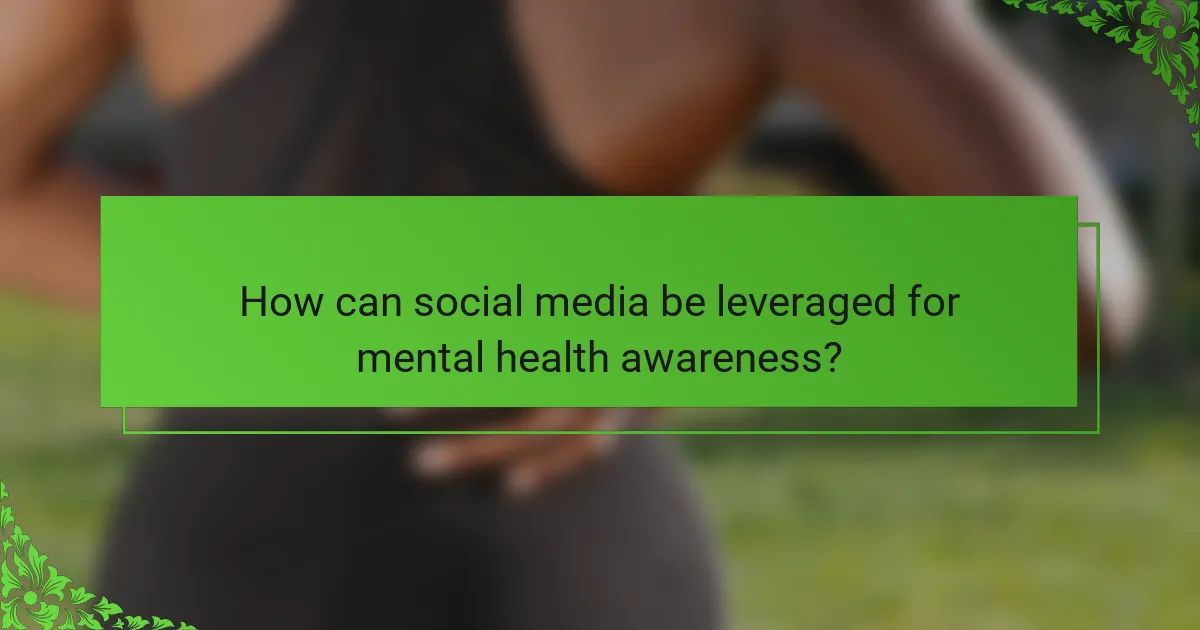
How can social media be leveraged for mental health awareness?
Social media can significantly enhance mental health awareness by fostering community engagement and sharing vital resources. Campaigns like Mental Health Awareness Month utilize platforms to disseminate information, promote events, and encourage open discussions. User-generated content, such as personal stories, can reduce stigma and create supportive networks. Statistics show that 64% of users feel more comfortable discussing mental health issues online, highlighting social media’s role in normalizing these conversations. Engaging visuals and hashtags can further amplify messages, reaching diverse audiences and encouraging participation in mental health initiatives.
What platforms are most effective for outreach?
Social media platforms are most effective for outreach during Mental Health Awareness Month. They facilitate community engagement and information sharing.
1. Facebook: Ideal for event promotion and community groups.
2. Instagram: Visual storytelling attracts younger audiences.
3. Twitter: Quick updates and conversations foster real-time engagement.
4. LinkedIn: Professional outreach connects organizations and mental health advocates.
5. YouTube: Video content educates and raises awareness effectively.
Which social media campaigns have been successful?
Successful social media campaigns for Mental Health Awareness Month often focus on community engagement and education. Campaigns like #MentalHealthAwareness and #BreakTheStigma have effectively used personal stories to foster connection. These initiatives typically include activities such as virtual events, informative posts, and interactive discussions. A notable example is the collaboration between mental health organizations and influencers, amplifying their reach and impact.
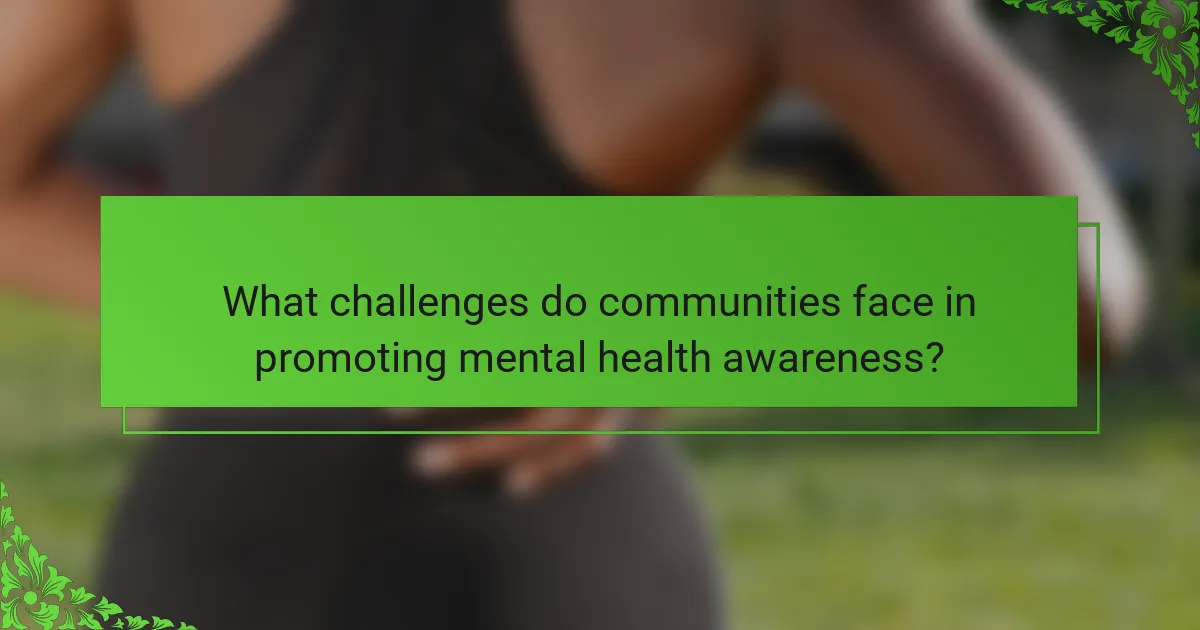
What challenges do communities face in promoting mental health awareness?
Communities face challenges in promoting mental health awareness due to stigma, lack of resources, and insufficient education. Stigma often prevents open discussions about mental health, discouraging individuals from seeking help. Limited funding restricts access to mental health services and programs. Additionally, inadequate training for community leaders and volunteers can hinder effective outreach and support initiatives. These factors collectively impact the ability to foster a supportive environment for mental health awareness.
How do cultural perceptions impact these challenges?
Cultural perceptions significantly shape the challenges faced in mental health awareness. Societal attitudes influence stigma, affecting individuals’ willingness to seek help. For instance, cultures that emphasize collectivism may prioritize family reputation over personal well-being, discouraging open discussions about mental health. Additionally, access to resources varies across cultures, impacting awareness and community participation. Understanding these cultural contexts is crucial for effective outreach and support initiatives during Mental Health Awareness Month.
What strategies can overcome these barriers?
Engaging communities through education and outreach can effectively overcome barriers to mental health awareness. Strategies include organizing workshops, promoting social media campaigns, and collaborating with local organizations. These initiatives increase visibility and foster open discussions about mental health. Community participation enhances understanding and reduces stigma, making mental health resources more accessible.
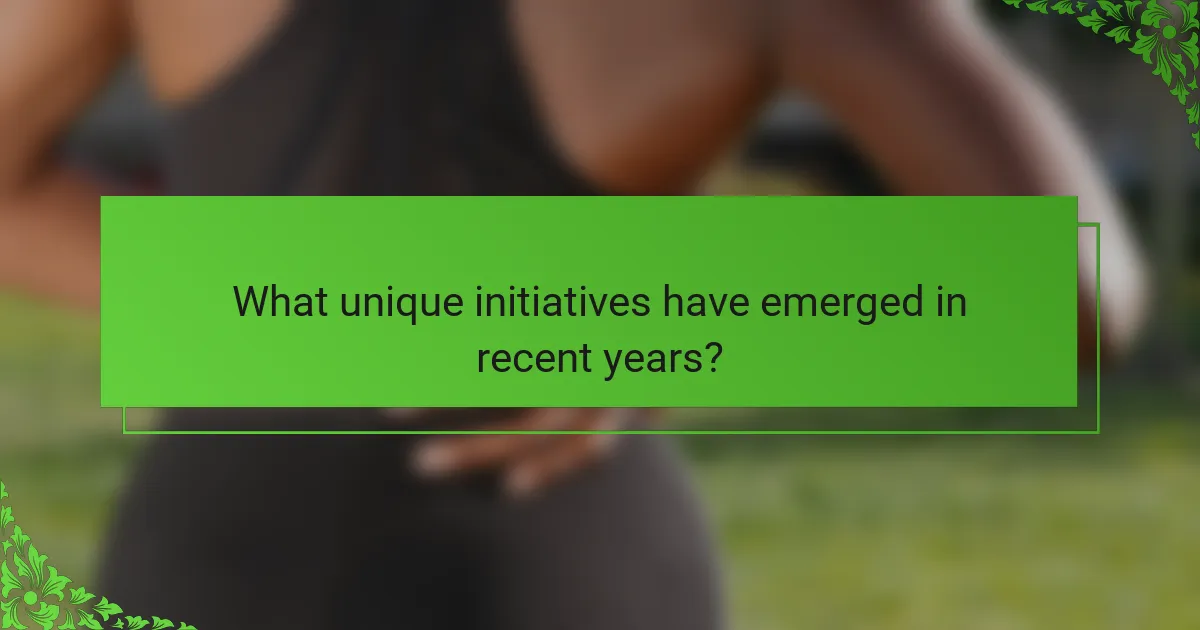
What unique initiatives have emerged in recent years?
Unique initiatives in recent years focus on community-driven mental health awareness activities. These initiatives include virtual events, art therapy workshops, and social media campaigns. For example, the “Share Your Story” campaign encourages individuals to share personal mental health experiences, fostering connection and understanding. Additionally, schools have implemented mental health days to promote student well-being. These efforts reflect a growing recognition of mental health’s importance and aim to reduce stigma while enhancing community participation.
How do these initiatives differ from traditional approaches?
Initiatives for Mental Health Awareness Month differ from traditional approaches by focusing on community engagement and proactive participation. Traditional methods often emphasize awareness through passive education, while contemporary initiatives encourage active involvement. This shift fosters a sense of belonging and collective responsibility, enhancing mental health support. Furthermore, new themes and activities are tailored to diverse populations, addressing unique needs and promoting inclusivity. This approach contrasts with conventional strategies that may overlook specific community dynamics.
What lessons can be learned from these unique initiatives?
Unique initiatives during Mental Health Awareness Month teach valuable lessons about community engagement and the importance of open dialogue. These initiatives highlight the effectiveness of collaboration among organizations, fostering a sense of belonging and support. They also demonstrate the need for tailored activities that resonate with diverse populations, ensuring inclusivity. Lastly, they emphasize the role of education in reducing stigma, encouraging individuals to seek help and share their experiences.
What best practices can enhance participation in Mental Health Awareness Month?
Engaging activities and community involvement enhance participation in Mental Health Awareness Month. Organizing workshops, webinars, and social media campaigns can effectively raise awareness. Collaborating with local organizations fosters a sense of community. Encouraging storytelling and sharing personal experiences promotes connection and understanding. Providing accessible resources and support options strengthens outreach efforts.
